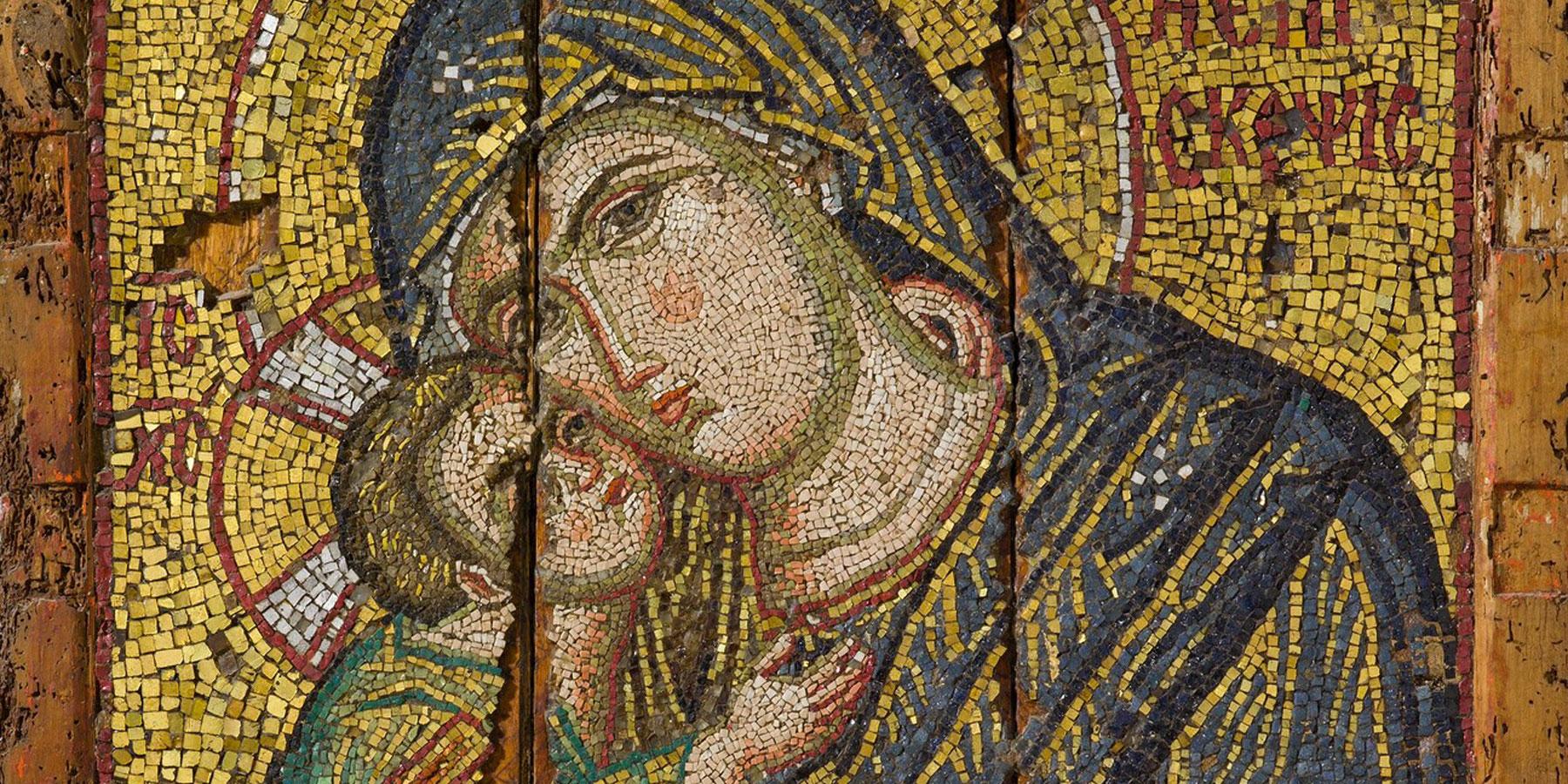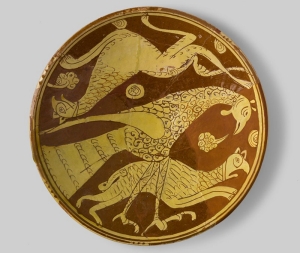Pottery workshops specializing in glazed ware for domestic use were located throughout the Byzantine Empire. Designs on household ceramics often imitated those on vessels made of silver or other precious materials. In the technique known as sgraffito, the design is drawn in thin lines incised through the white coating, called slip, to reveal the red clay body beneath. On vessels with champlevé designs, the white slip was removed so that the figures would stand out against the dark red background of the clay. Finally, glazing made the porous ceramic fabric waterproof.
Banner Image: Mosaic icon of the Virgin Episkepsis, Constantinople, late 13th century, glass, gold, and silver tesserae, Athens, Byzantine and Christian Museumby Velissarios Voutsas of the Church of Hosios Loukas, Phokis, Greece, 11th century





